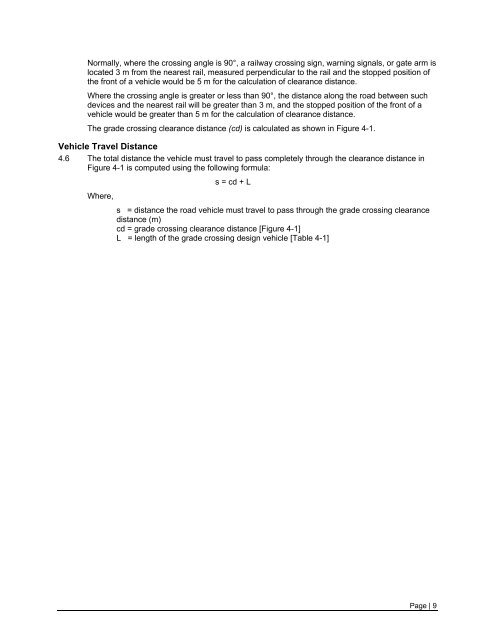Draft Canadian Railway-Roadway Grade Crossings Standards ...
Draft Canadian Railway-Roadway Grade Crossings Standards ...
Draft Canadian Railway-Roadway Grade Crossings Standards ...
Create successful ePaper yourself
Turn your PDF publications into a flip-book with our unique Google optimized e-Paper software.
Normally, where the crossing angle is 90°, a railway crossing sign, warning signals, or gate arm is<br />
located 3 m from the nearest rail, measured perpendicular to the rail and the stopped position of<br />
the front of a vehicle would be 5 m for the calculation of clearance distance.<br />
Where the crossing angle is greater or less than 90°, the distance along the road between such<br />
devices and the nearest rail will be greater than 3 m, and the stopped position of the front of a<br />
vehicle would be greater than 5 m for the calculation of clearance distance.<br />
The grade crossing clearance distance (cd) is calculated as shown in Figure 4-1.<br />
Vehicle Travel Distance<br />
4.6 The total distance the vehicle must travel to pass completely through the clearance distance in<br />
Figure 4-1 is computed using the following formula:<br />
Where,<br />
s = cd + L<br />
s = distance the road vehicle must travel to pass through the grade crossing clearance<br />
distance (m)<br />
cd = grade crossing clearance distance [Figure 4-1]<br />
L = length of the grade crossing design vehicle [Table 4-1]<br />
Page | 9
















